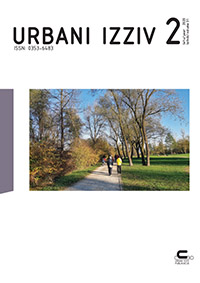Influence of traditional settlement patterns on urban design and planning: A case study of Zaria, Nigeria
Influence of traditional settlement patterns on urban design and planning: A case study of Zaria, Nigeria
Author(s): Peter Bikam, James ChakwiziraSubject(s): Social Sciences, Geography, Regional studies, Rural and urban sociology
Published by: Urbanistični inštitut Republike Slovenije
Keywords: traditional settlements; vernacular architecture; urban design and planning; Hausa culture;
Summary/Abstract: This article discusses the influence of traditional settlement patterns on planning new parts of towns using the case study of the old town of Zaria, Nigeria, which developed from the eleventh to nineteenth centuries. The central argument is that some elements of old settlement patterns have been integrated into Zaria’s new town. The literature review traces the evolution of the city, reflecting on traditional Hausa architecture, settlement forms, and their influence on spatial organization. Maps, sketches, and tables are used to illustrate how the rich Hausa tradition has influenced urban design and planning. The study shows that some traditional settlement patterns influenced urban design because old vernacular architecture was gradually integrated into new town plans. The article concludes that architects, planners, and developers can learn from this case study of Zaria.
Journal: Urbani izziv
- Issue Year: 31/2020
- Issue No: 2
- Page Range: 66-77
- Page Count: 12
- Language: English

